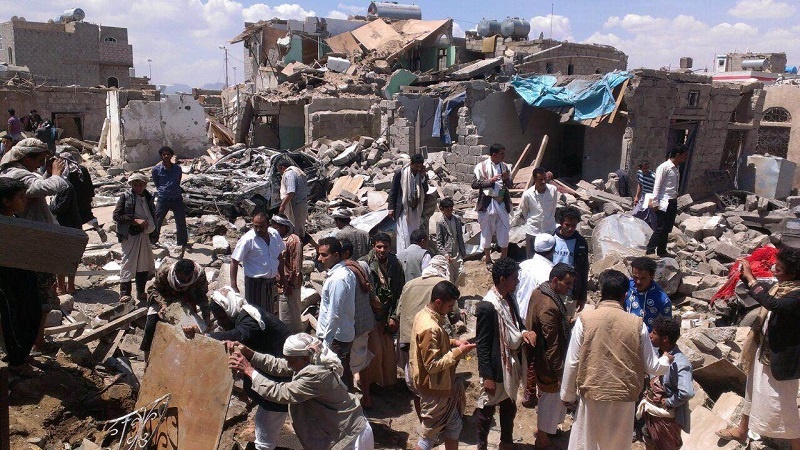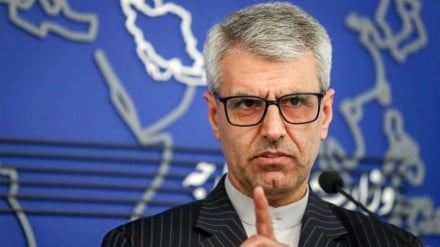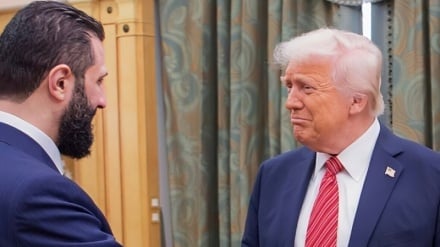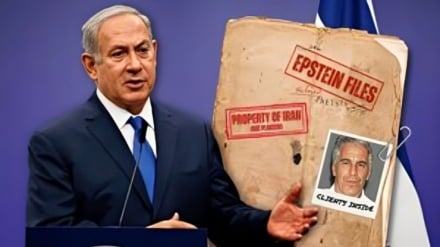Syria and Yemen: A tale of two conflicts
Syria and Yemen present the horrible spectacle of countries destroyed and people killed in tens of thousands by US-supported Saudi Arabia, in the first named country indirectly through terrorists and in the second country through direct state terrorism by Riyadh, while the world watches in ominous silence without any concern for the human catastrophe, but time-to-time opportunistic propaganda in favour of the West and its protégés.
Now we have a factual analysis by Gavin O’Reilly, social activist from Dublin, Ireland, titled: “Syria and Yemen: A tale of two conflicts”.
Over the past six years, the world has looked on in horror as a modern-day humanitarian crisis has unfolded in Syria.
Emotive images of young children lying dead and injured from air strikes regularly fill our television screens, and there is no shortage of news reports – totally biased – alleging human rights abuses of the Syrian government and its allies in Russia and Iran.
What has received significantly less media coverage however, is the equally barbaric war being waged on Yemen since March 2015, one that has seen thousands of civilians slaughtered by Saudi Arabia’s indiscriminate air strikes, and has forced an already impoverished nation into famine.
This disparity in media coverage is no mistake, and to understand why, one must look at the geopolitical, military and financial factors driving both wars.
The conflict in Syria has its roots in President Bashar al-Assad’s 2009 refusal to allow US-allied Qatar to build a pipeline through his country into Turkey, one that would have undermined his relationship with Russia and Iran.
Having long been a nation that refused to kowtow to the demands of the US hegemony, this refusal by Syria came as the final straw.
Following protests calling for government reform that began in March, the CIA began covertly arming and training Salafist groups in a bid to overthrow President Assad’s secular leadership.
Similar to what was playing out in Libya at the time, these groups soon took over vast swathes of the country, imposing macabre laws in areas under their control and carrying out ethnic cleansing of minority groups such as Christians and Shi’a Muslims.
In 2013, Iran, at the request of the Syrian government, with which it has a long-standing defence cooperation agreement, decided to help, since any US success in destabilizing Syria would embolden Washington to attempt to create sedition in Tehran.
Using the image of drowned child Aylan Kurdi, the Western media did their utmost to drum up support for the militants in Syria, one that almost came to fruition this year when the Trump administration launched cruise missiles at a Syrian airbase on alleged chemical attack – that was found later to be the work of the militants.
Such concern for the children of Syria by the Western Media has never been extended to the children of Yemen however.

In March 2015, following the takeover of the capital Sana’a by the popular Ansarallah Movement, a Saudi air campaign began in a bid to restore the fugitive president, Mansur Hadi, whose interim term had already expired.
This mainly targeted the agricultural sector of Yemen, resulting in widespread starvation in what is already the most impoverished country in the Arabian Peninsula.
The subsequent collapse of Yemen’s health, water and sanitation systems led to the worst Cholera outbreak in recorded history, and the situation has been exacerbated further by a Saudi blockade preventing food and medical supplies from entering the country.
Despite this being the world’s foremost humanitarian crisis, one in which 50,000 children are expected to die by the end of 2017 alone, the situation in Yemen has only garnered a fraction of the media coverage that Syria has received since 2011.
Key to this media whitewashing is the lucrative arms trade between the US and Saudi Arabia. In May of this year, Donald Trump signed a record $110bn arms deal with the House of Saud, far surpassing previous deals signed with the Kingdom by his predecessors Barack Obama and George Bush.
US Military Advisors also provide training to Saudi forces and play a key role in the Yemeni conflict by providing intelligence to the Saudi command on where to direct air strikes.
This longstanding agreement of military cooperation between both nations not only satisfies the desires of wealthy Defense Contractors but also allows the US to use Saudi Arabia as a bulwark against the aspirations of the peoples, on the pretext of checking Iranian influence, a common factor in both conflicts.
However unlike the Syrian conflict, which the western media has framed as ‘rebels’ trying to depose what they allege a ‘dictator’ backed up by his Russian and Iranian allies, no such narrative can be constructed for the really brutal Saudi war in Yemen, hence the media silence on what is now amounting to a genocide.
AS/ME


